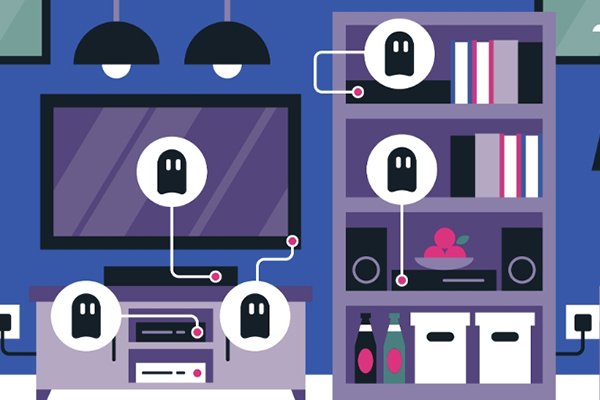Is It Safe to Leave Power Strips Plugged in All the Time?

Sometimes I forget the power strip even exists—tucked behind my desk, always on. But is leaving it plugged in 24/7 really safe?
Leaving a power strip plugged in all the time is generally safe if it’s high quality, not overloaded, and used in a well-ventilated area. However, aging strips, poor ventilation, or proximity to flammable materials can pose fire risks. Experts recommend unplugging when not in use for added safety, especially in homes with children or pets.
We use power strips1 everywhere—but few of us stop to think if it’s okay to leave them running all the time.
Potential Fire Hazards: What the Experts Say
Fire safety professionals are clear: not all power strips1 are created equal.
Old, overloaded, or poorly made power strips1 can overheat and spark fires—especially when left plugged in around the clock.

Overheating and Electrical Fires
Fire departments report that many home fires start from improper power strip use. Heat builds up from overloading or dust accumulation, especially behind furniture. When placed near curtains or in tight spaces, a small spark can escalate quickly.
Age and Wear Are Hidden Dangers
Worn-out internal wiring or damaged insulation can silently fail over time. Strips over five years old—especially ones without surge protection2—should be replaced. Look for cracks, discoloration, or buzzing sounds, which may indicate danger.
| Risk Factor | Fire Hazard Level | Prevention Tip |
|---|---|---|
| Overloading the strip | High | Don’t exceed amp/watt limit |
| Old/damaged power strip | High | Replace every 3–5 years |
| Covered or dusty strip | Medium | Keep well-ventilated and clean |
| High-power appliances | Extreme | Plug into wall directly |
Energy Consumption When Not in Use: Standby Power Explained
Power strips can quietly add to your energy bill.
Even when your devices are off, plugged-in power strips1 can draw “phantom” electricity—wasting energy and money.

Standby Power: A Hidden Cost
According to the U.S. Department of Energy, standby power can account for 5–10% of household electricity use. That means even your “off” printer or TV could still be draining power.
Smart Strips Can Cut the Waste
Some modern power strips1 detect when devices aren’t in use and cut power automatically. These are ideal for TV centers, computer desks, and even gaming setups.
| Device Type | Estimated Standby Use (Watts) | Monthly Cost (USD) |
|---|---|---|
| TV | 2–5 | $0.30–$0.75 |
| Gaming Console | 1–4 | $0.20–$0.60 |
| Printer | 1–2 | $0.15–$0.30 |
| Laptop Charger | 0.5–2 | $0.10–$0.30 |
When Is It Safe—and When Is It Not? Situational Guidelines
Context matters when deciding whether to keep a power strip always on.
If the strip is newer, has overload protection3, and isn’t overloaded, it’s typically safe. But in certain settings—like near water or unattended for long periods—it’s best to unplug.

Use Cases: Green Light vs. Red Flag
Safe Situations:
- Surge-protected strip powering a desktop
- Strip placed in open air (not under rugs)
- Smart strip with auto-shutoff4
Unwise Situations:
- Plugging in space heaters or hair dryers
- Behind couches or under beds
- Wet or humid environments (bathroom/kitchen)
Simple Safety Checks
- Is your strip warm to the touch?
- Do plugs fit loosely or spark?
- Is there visible damage on the housing?
If yes, it’s time to unplug and replace.
Smart Alternatives: Auto-Shutoff and Timer Power Strips
For those of us who always forget to turn things off (guilty), smart power strips5s](https://www.cnet.com/home/kitchen-and-household/best-surge-protector/)[^1] offer a better solution.
Smart strips with auto-shutoff4, timers, or app control can reduce risk and save money. They’re ideal for tech-heavy homes and offices.

Modern Features That Protect and Empower
Smart strips today go beyond just “on/off”:
- Auto-shutoff: Turns off when a device idles
- Wi-Fi control: Schedule usage via mobile app
- Voice assistants: Alexa and Google-compatible models available
- Overload alerts: Some models send a notification to your phone
Choosing the Right Smart Strip
Look for CE, RoHS, or UL certification. Reliable brands include Belkin, TP-Link (Kasa), and How-dy’s own OEM options—built for safety-conscious buyers in Europe and beyond.
| Feature | Benefit |
|---|---|
| Auto-shutoff | Saves energy, prevents overuse |
| Timer settings | Perfect for workstations |
| App/voice integration | Remote control and convenience |
| Overload protection | Peace of mind for electronics |
Conclusion
Leaving your power strip plugged in isn’t always dangerous—but it’s not always safe either. If in doubt, unplug, upgrade, or go smart. Your devices—and your peace of mind—are worth it.
-
Explore this link to find high-quality power strips that ensure safety and efficiency in your home. ↩ ↩ ↩ ↩ ↩
-
Understand the importance of surge protection to safeguard your valuable electronics. ↩
-
Learn about overload protection features that can prevent electrical fires and enhance safety. ↩
-
Discover how auto-shutoff features can enhance safety and energy efficiency in your devices. ↩ ↩
-
Explore the advantages of smart power strips that can enhance safety and energy efficiency. ↩






